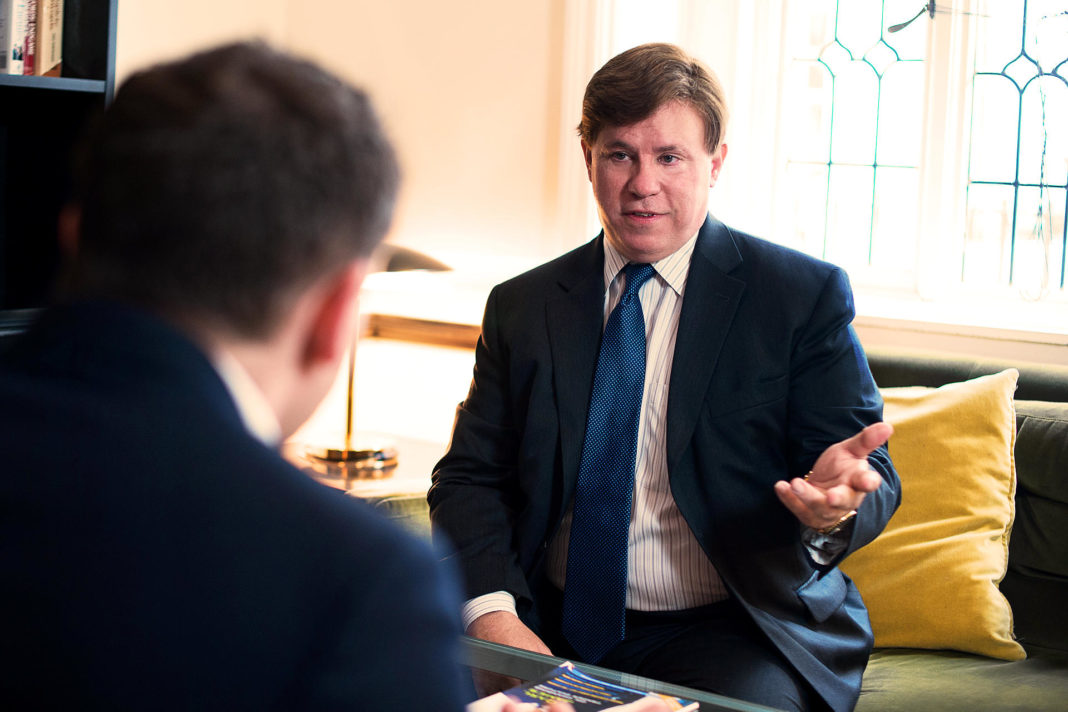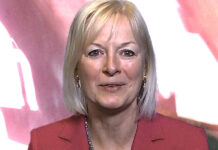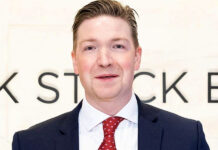Dating back to the 1930s, the California Public Employees Retirement System (CalPERS) is the largest pension fund in the United States. Mike Rosborough, senior portfolio manager and investment director spoke to The DESK and gave his insights on trading and portfolio management in today’s rapidly changing markets. Additional comment came from Jonathon O’Donnell, investment manager and head of governments and foreign exchange trading at CalPERS who works closely with Mike.
Given the level of change you see in the secondary market, is there any advice you can pass on to a trader now that would still be useful in five years?
Mike Rosborough (MR): There are some universal truths to dealing. There is always a discovery process. Whatever the technology and how it evolves there will always be price discovery. I don’t just mean price at the marginal trade, but price and how deep is liquidity behind each price? So how readily can we move a block and how much does a price trail off? The techniques of price discovery will change with the technology, but the general ethos is to try to give out as little information as you can while receiving as much as you can in return. And it’s a human negotiation that might be apparent behind whatever technology you use.
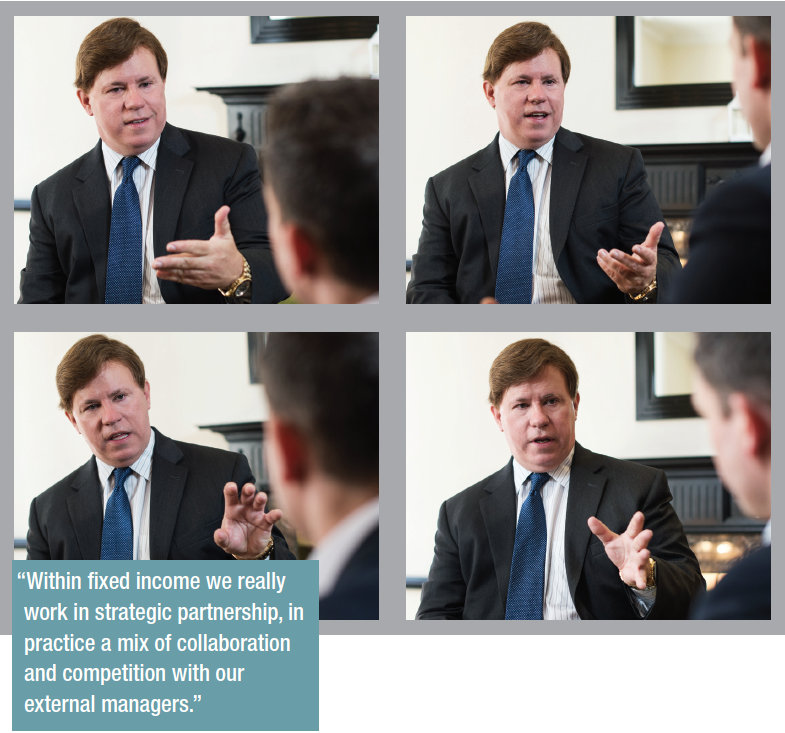
Are there any things to watch out for?
MR: There will always probably be tricks of the trade that dealers will use to effectively mark things up more than they should, and we have to be vigilant for that. You must have access to a range of counterparties. You may find the number of people playing in a certain instrument has narrowed, but you still need to have relationships with all the players and the things that you are going to be active in. That will I think not change. There is a lot of idiosyncrasy in the fixed income market that I think will keep this an OTC market, in many ways, for many years to come.
How is the dealer picture changing from your perspective?
Jonathon O’Donnell (JOD): The dealer community has become much more specialist than the generalist aspect that it used to have. And it’s been striking that banks that you used to be able to go to for a multitude of products that you would consider core banking services are just not there anymore. So it forces you to have a much more diversified roster of counterparties. I think we have somewhere in the neighbourhood of 50 different counterparties for all the different asset classes that we have.
What guides your trading philosophy?
MR: This will seem a bit odd for a market counterparty discussion, but the value of the brand is important to us. We were around as a pension fund trading fixed income before there were asset managers in this business. We date back to the 1930s when pension funds were more bond intensive than they are now.
We have always put a lot of emphasis on our name and the value of that name, in terms of being a fair dealer, and in our counterparties’ respect for us. They deal fairly with us and provide us with liquidity knowing that we will always be there. That’s important.
Because we have a good reputation of dealing fairly, we get good fills on new issues in the areas that my team deals in. We get people showing us stuff, comfortable that if they deal with us they are not going to get hurt by doing it. We don’t spread the information around.
That has been a hallmark of what we do here and how we do it. And in the information and advice I am going to pass on, to whoever my successor is, I am trying to impart that as well, because I think it works.
Do you see transparency improving, in your view of your orders and trades?
MR: The FX market was always a supposedly very liquid commoditised market. Yet there was a lot of client segmentation that went on, and there was a lot of ways of making money out of something which should have had very narrow bid-offer spreads.
Increased regulation and the fines that banks have had to pay have chastened the market makers in those areas and they are more transparent than they used to be. The FX market’s focus on the WM Fix fell away because of the regulatory problems around it. In some senses that took liquidity away from the markets, but it also took away the banks’ advantage in the markets and made it a bit more of a level playing field.
Do you feel that increasing trade reporting to TRACE will enhance the investment process or pose risks around liquidity?
JOD: I would take the more pessimistic view on that. Until the market is centrally cleared, or banks have more balance sheet, the dissemination of positions immediately after a trade can be very dangerous. I would be very concerned putting some of the big size of our inflation-linked bond trades through and having those become immediately obvious to the street.
Until there are bigger balance sheets and we can spread liquidity out without having market impact you don’t want to be giving all your information out just for the sake of transparency.
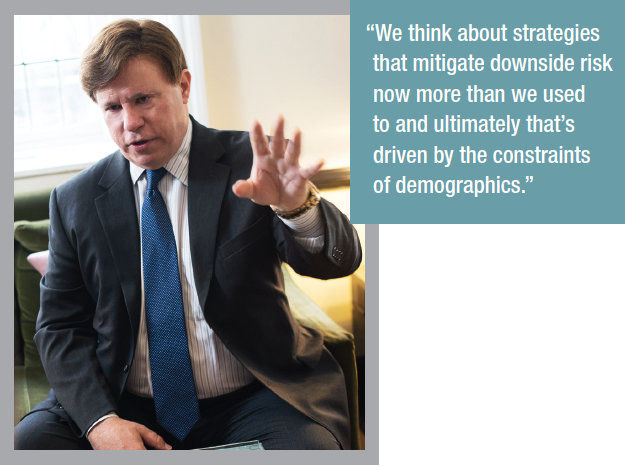
How do you see the flow of information between buy-side trading desks and portfolio management changing?
MR: The important thing for me is to be able to communicate to Jonathan how I want the portfolio to look, and then he can figure out the best way to make it look like that. What the best instruments are, where our liquidity is in them, who the dealers are, how best he should execute – all at once or in smaller size – he’s figuring that stuff out which frees me up to do a lot of other things in my role.
When I started at Pimco, we traded our own portfolios. We had to do the research, we had to do the economics, we always had a bigger-picture process but we had to know all the dealers, and in those days the dealing was over the phone. Now you have a number of different ways of interfacing with the markets through Tradeweb and other systems.
Is that flow reflected in your relationship with external asset managers’ trading desks?
MR: We use Aladdin for our external portfolios and that’s how we view our external managers’ portfolios. But we talk to both the trading teams and our external managers, to see how they do what they do and to share insights on how we do it.
CalPERS uses far fewer external asset managers in fixed income than in equities, why is that?
MR: Most of our money is managed internally on the fixed income side and on the equity side, but equities run against an index so there is more of an index replication strategy; they are finding ways to enhance securities lending or execution. In fixed income we are focussed on an alpha strategy, so we often deviate much more from our benchmarks and we use a broad range of tools to earn alpha. We have external managers, but it’s a very small part of what I do. I oversee and interface with them and I get to see their portfolios daily, but it’s almost competition as well as collaboration with them.
What sort of qualities do you think third-party asset managers need?
JOD: I am not sure asset managers’ days are numbered yet in dealing exclusively with custodial relationships. But we need to see development on the trading side of things, moving towards this more diversified model of accessing liquidity from a fixed income perspective, to be comfortable with their style.
Looking at an asset manager, from a due diligence perspective and a trading perspective, there has to be some base level of sophistication there to make us comfortable. The types of systems they use, how they access liquidity.
MR: The big struggle external asset managers have is the rise of indexation. Active management is under threat somewhat; my sense is that’s more true in equities than fixed income. It’s been more difficult over time to find a cohort of asset managers on the equity side that have consistently beaten their benchmarks, versus what you could find on the fixed income side.
They all feel under pressure; the rise of indexation, low levels of interest rates, more pressure on fees, we are all looking for cost savings. And there is probably a growing desire for a smaller group of managers. We have a big push to reduce the number of external managers that we have which is echoed at other large funds.
What makes managing those relationships challenging?
MR: It is an administrative task to follow a lot of managers, in enough detail, that you know what they are doing, to oversee the risks that they possibly pose for you, and that they are true to their model, and that there aren’t compliance issues.
So fewer is probably better in general in having external managers. We found that it reduces our complexity as a fund, to have fewer relationships. But you want to have enough that you get diversity, and we have an interesting model within fixed income where we really work in strategic partnership, in practice a mix of collaboration and competition with our external managers.
And yet you have to balance competition with co-operation.
MR: We run money internally against the same benchmarks that they run money for us. We are more unique than we are common in that regard. We maybe extract more from our external managers than others do and we try to be of value to them. Hopefully they get as much out of our monthly calls as we do.
Which markets do you think are best supported by counterparties at the moment?
JOD: The hard currency credit markets in the US are very well covered. You need to have a degree of balance sheet available on those markets from a bank perspective. Almost every bank is there, as are brokers.
Markets where you might expect more coverage and more liquidity would be the non-dollar side of things including inflation-linked bonds. Those markets are very domestic-investor driven, so it’s a lot harder to find banks to provide liquidity and that’s where you get into the whole specialisation model of having to talk to Canadian banks or Scandinavian banks to access those markets; the guys that have the direct relationships with the domestic investor.
You would think for a big government bond market it would be much more liquid than it is.
Have any technology-led initiatives impressed you recently?
JOD: We are seeing a much more integrated trading workflow between order management systems and the execution management systems, almost regardless of the asset class. Execution strategies and execution management systems have grown tremendously. Third party vendors that will supply different strategies/algorithms to access liquidity in FX are now starting to move into fixed income to a certain extent. A lot more of my time is spent on the evolution of technological interfaces in fixed income.
MR: We will always be interested to see what our providers’ platforms do. For example we use Barclays’ indices and those have just moved to Bloomberg. Will Bloomberg tie the fact that they control the indices into some form of trading technology that allows the industry to provide another new platform of liquidity?
We are always re-evaluating whether or not the platforms we use provide us with enough insight into the risk factors in our portfolio, and ways of slicing and dicing and analysing our portfolios beyond simple things like market value in each individual asset, or each bucket, duration contribution buckets, how well we measure curvature and key rate durations. So we tend to collaborate closely with those who provide these platforms and systems.
Where do you see short termism growing in the market and how do you react to it?
MR: Hedge funds have very different approaches to the market. Classically hedge funds would pay for liquidity, so they could have turnover and use trading as part of their risk management tools while extracting gains from shorter term dislocations in the market.
The reason I think that the short term, hedge fund model has suffered, is partly related to liquidity provision. The cost of getting into positions has increased, making that business more difficult. Every time you increase transparency the ability to extract short-term gains becomes more difficult, and that I think has hurt that community as well.
Has their value changed as a counterparty?
MR: Classic investors in hedge funds were those trying to protect their downside. You protect your downside if you are going to need cash, and you need to use your funds under management in some sort of near-term timeframe.
For a very long time our cash flows were always positive in terms of contributions from our members – i.e. our future retirees – exceeding what we had to pay out to our existing retirees. What has changed for us and other pension funds is that, because of demographics, cash flows have gone negative. We pay out more in member benefits than we take in contributions. We want to manage the pressure that exerts on us to shorten our timeframe and how that might cause us to miss out on opportunities.
How is that concern manifested?
MR: Do we have to worry about always having enough liquidity to pay benefits and does that mean we have to be conscious that we may have longer-dated assets when we don’t want to? I think that is a key concern, whereas in the old days, if the markets traded off, our cash flows were positive. It was a good thing for us to invest our new cash more cheaply. Now the shoe is on the other foot that way.
We will always be long-term investors and we have beneficiaries that we hope are stretching out into the infinite horizon. But the short term of the demographics changing and the cash flow change makes us more aware that we have to manage liquidity and downside risk for the fund in different ways.
What will that mean for managing risk in the pensions business?
MR: You will see a lot more pension funds concerned about the impact of a market drawdown like 2008 so that their funded position doesn’t get worse and make it harder to battle back, while not being set up to take advantage of any weaknesses in the market. We think about strategies that mitigate downside risk now more than we used to. And that’s ultimately driven by the constraints of demographics.
Do you expect to increase your use of derivatives as a result?
MR: Potentially that’s one of the things we are evaluating, I would say maybe leverage is a better way to think about it. Will you need to access leverage if you don’t want to sell investments in order to take advantage of market dislocation? Leverage will often imply using derivatives on the futures market by cash or option strategies.
Biography: Mike Rosborough is a senior portfolio manager and investment director at the California Public Employees Retirement System (CalPERS), the largest pension fund in the United States, and is in charge of approximately $36 billion in assets, including the Fund’s international and emerging markets fixed income investments and the Fund’s inflation programme, which is comprised of global inflation linked bonds and commodities.
He also oversees CalPERS’s currency management activities and is one of seven members of the Fund’s Tactical Asset Allocation team. With an investment career spanning 30 years, he began as a trader at RBC Capital Markets in Toronto, Canada and later headed its Asian fixed income sales and trading group in Tokyo, Japan. He joined PIMCO in Newport Beach, California in 1994 as a portfolio manager where he founded that firm’s emerging markets fixed income practice after co-heading its international department. In 2000 he left PIMCO to join Moore Capital, a New York based hedge fund as a portfolio manager for that firm’s fixed income fund.
Prior to joining CalPERS in 2010 he worked for Citigroup in the UK as a strategist and proprietary trader.
©TheDESK 2017
©Markets Media Europe 2025

